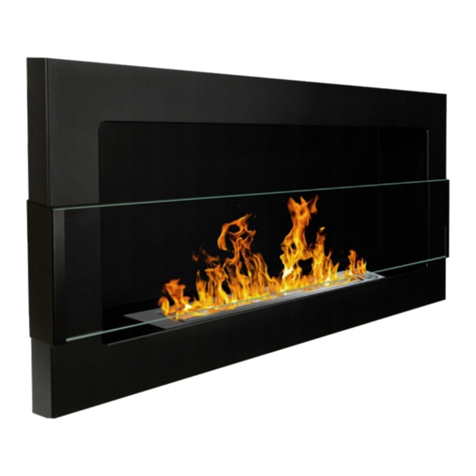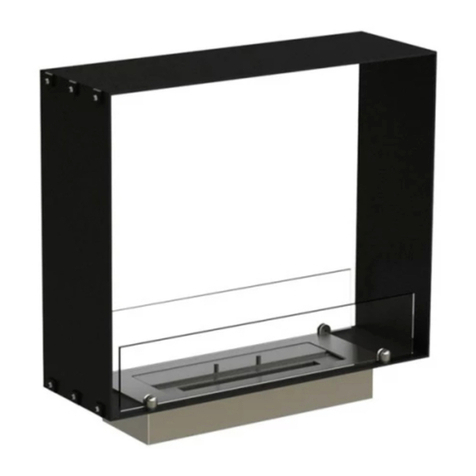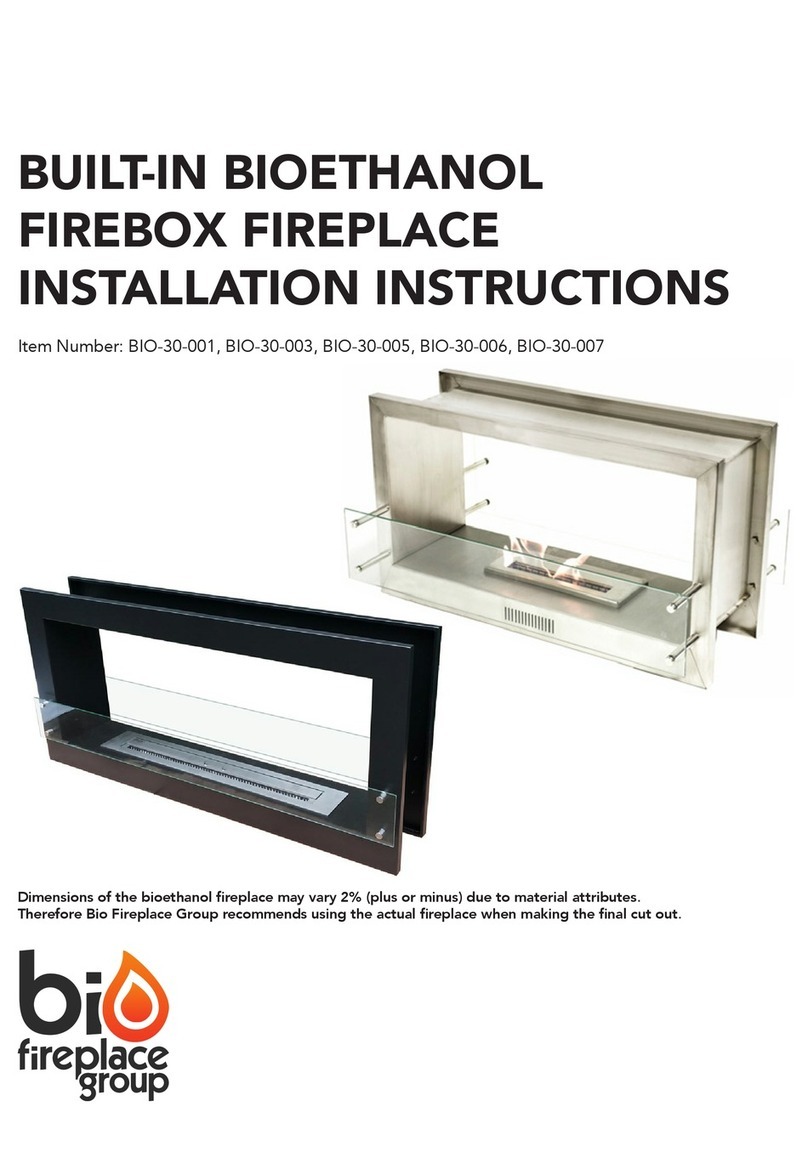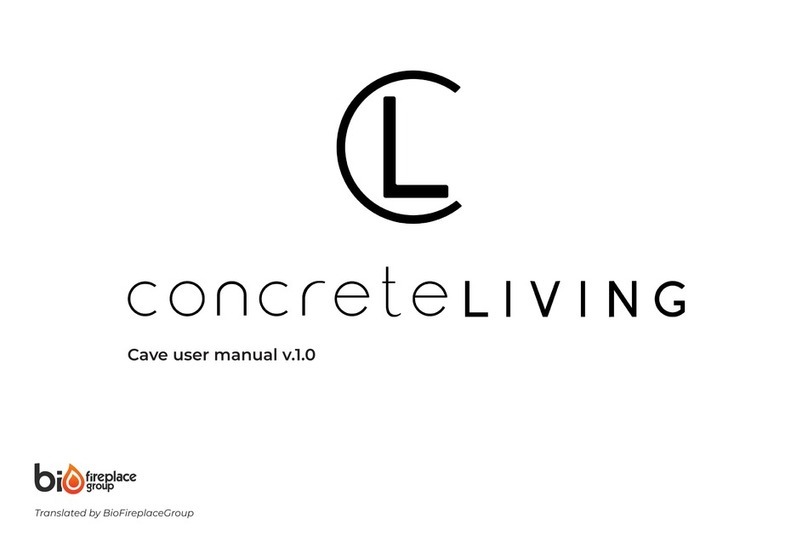
12 www.biofireplacegroup.com
Gas Requirements
Cylinder, Regulator and Hose
• The pressure regulator and hose assembly to be used must conform to local standard
codes.
• The installation must conform to local codes, or in the absence of local codes, with the
standard for the storage and handling of liquid petroleum gases.
• A dented, rusted or damaged propane tank may be hazardous and should be checked by
your tank supplier. Never use a propane tank with a damaged valve connection.
• The propane tank must be arranged to provide for vapor withdrawal from the operating
cylinder.
• Never connect an unregulated propane tank to the heater.
• To change the gas cylinder in a amply ventilated area, away from any ignition source
(candle, cigarettes, other flame producing appliances, ...).
• To check that the regulator seal is correctly fitted and able to fulfil its function.
• To not obstruct the ventilation holes of the cylinder housing.
• Instructions in case of gas leakage; for instance : in the event of gas leakage, the
appliance shall not be used or if alight, the gas supply shall be shut off and the
appliance shall be investigated and rectified before it is used again.
• The recommended frequency of checking the tubing or the flexible hose (at least once
per month and each time the cylinder is changed). If it shows signs of cracking, splitting
or other deterioration it shall be exchanged for new hose of the same length and of the
equivalent quality.
This appliance is only suitable for use with low-pressure butane or propane gas and fitted
with the appropriate low-pressure regulator via a flexible hose. The hose should be secured
to the regulator and the appliance with hose clips or nut. This barbecue is set to operate a
28 mbar regulator with butane gas and a 37mbar regulator with propane gas and a regulator
with butane/propane mixture at 50mbar and a regulator with butane/propane mixture at
30mbar.
Use a suitable regulator certified to BSEN16129:2013.
Please consult your LPG dealer for information regarding a suitable regulator for the gas
cylinder.
Regulator and hose
Use only regulators and hose approved for LPG at the above pressures . The life
expectancy of the regulator is estimated as 5 years. It is recommended that the regulator is
changed within 5 years of the date of manufacture.
The use of the wrong regulator or hose is unsafe; always check that you have the correct
items before operating the heater.
The hose used must conform to the relevant standard for the country of use. The length of
the hose must be 0.5 meters (maximum). Worn or damaged hose must be replaced. Ensure
that the hose is not obstructed, kinked, or in contact with any part of the heater other than
at its connection.







































